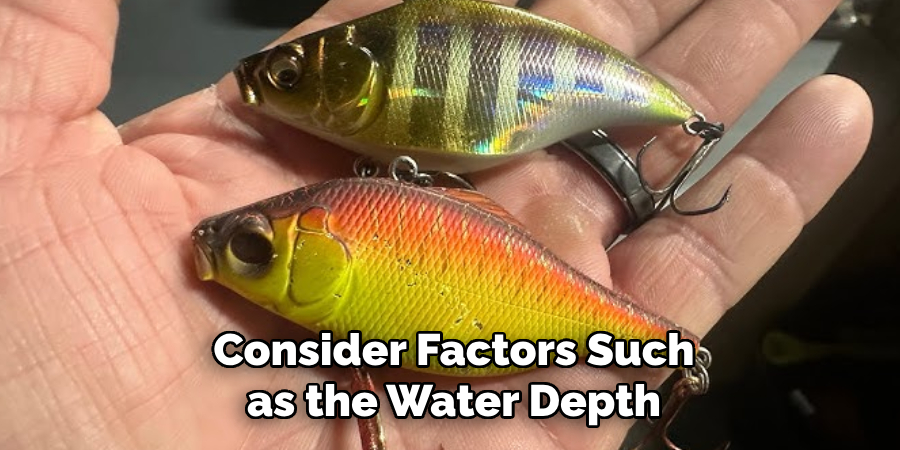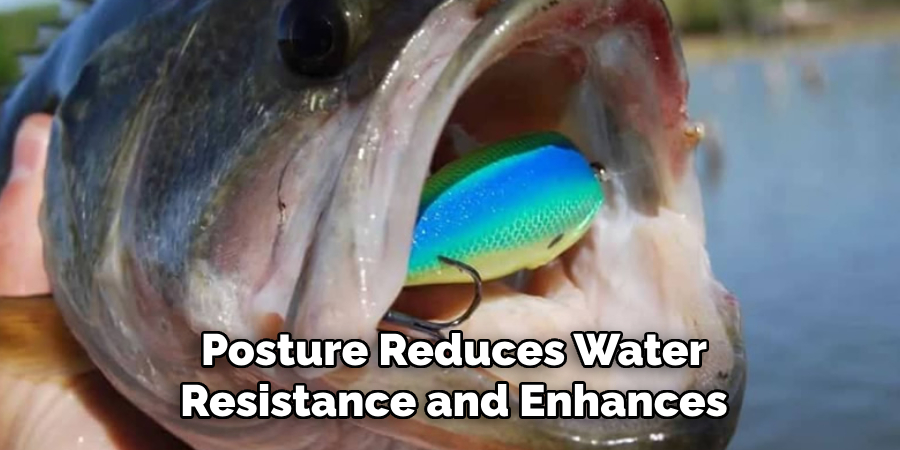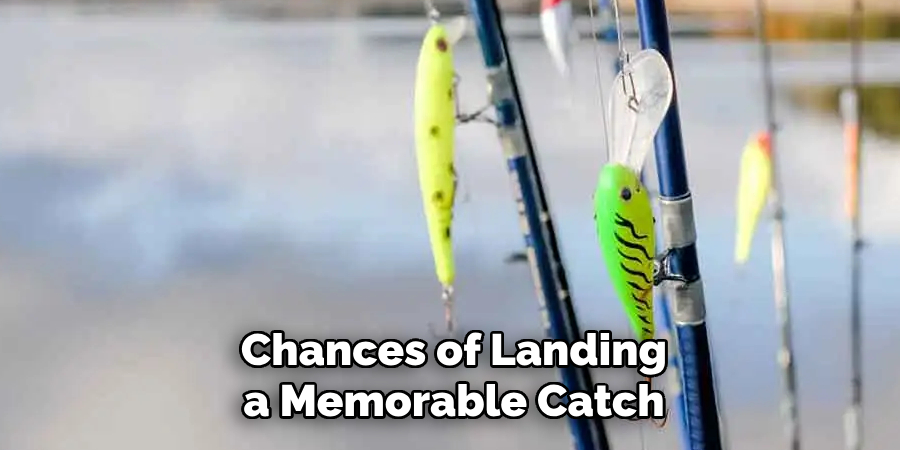Crankbait fishing is an effective and versatile technique for anglers aiming to catch a variety of fish species. However, retrieving a crankbait correctly is crucial to mimic the natural movement of prey and maximize your chances of success.
This guide on how to retrieve crankbait will cover the essential steps and tips to help you master the art of crankbait retrieval, ensuring a more productive and enjoyable fishing experience.

Why Retrieve Crankbait is Important?
Before diving into the techniques of retrieving crankbait, it’s essential to understand why it is crucial. The way you retrieve crankbait plays a significant role in how effective it will be in attracting fish. Retrieving crankbait involves mimicking the movements of natural prey and creating an enticing action that lures fish toward your bait.
It’s also essential to vary your retrieval techniques based on the type of crankbait you’re using, as different lures require different actions to achieve maximum effectiveness.
Needed Materials
To retrieve a crankbait correctly, you will need some essential materials. These include:
A Fishing Rod:
The type of rod you use will depend on the weight and size of your crankbait. Generally, a medium to medium-heavy power rod with a fast or extra-fast action is suitable for most crankbaits.
A Fishing Reel:
A low-profile baitcasting reel is the most commonly used type of reel for crankbait fishing. However, you could also use a spinning reel if that is what you are comfortable with.
Crankbait Lures:
There are various types and sizes of crankbaits available in the market, each designed to attract different fish species. It’s essential to choose a lure based on the type of fish you’re targeting and the depth at which they are feeding.
8 Step-by-step Guidelines on How to Retrieve Crankbait
Step 1: Choose the Right Crankbait
The first step in retrieving crankbait effectively is selecting the right crankbait for your fishing conditions. Crankbaits come in various shapes, sizes, and colors, each designed with specific purposes in mind. Consider factors such as the water depth, clarity, and the type of fish you are targeting.

For example, deep-diving crankbaits are ideal for reaching fish at greater depths, while shallow-running crankbaits are better suited for fishing near the surface. Additionally, choose colors that match the baitfish in the area or stand out based on water clarity—natural colors for clear water and brighter, more vibrant colors for muddy or stained water. This careful selection ensures your crankbait mimics prey effectively, increasing your likelihood of attracting fish.
Step 2: Understand Your Lure’s Diving Depth
Knowing your crankbait’s diving depth is essential for successful retrieval, as it ensures your lure is operating in the strike zone where fish are most likely to bite. Each crankbait is designed to reach a specific depth range, which is typically indicated on the packaging or product description.
Start by identifying the depth at which your target fish are feeding, taking into account water temperature, time of year, and fishing environment. Then, select a crankbait that matches this depth. When casting, allow the crankbait to reach its intended depth by reeling in at a steady pace while giving the lure enough time to sink or “dive.” Mastering this aspect will ensure your crankbait maintains its optimal swimming action, increasing its appeal to nearby fish.
Step 3: Choose Your Retrieval Technique
There are several proven techniques for retrieving crankbait, each designed to mimic different types of prey. Some popular methods include a steady retrieve, stop-and-go retrieve, and twitching or jerking the bait. It’s essential to experiment with different techniques until you find one that works best for your target species and fishing conditions.
Additionally, pay attention to how your lure reacts during retrieval and adjust your technique accordingly. For instance, if you notice fish following but not biting, try speeding up or slowing down your retrieval speed to trigger a strike. If you encounter weeds or other obstacles that may snag your lure, consider using a stop-and-go technique or “twitching” the bait to keep it from getting caught.
Step 4: Keep Your Rod Tip Low and Pointed Downwards
Maintaining the correct rod positioning is critical for effective crankbait retrieval. Keep your rod tip low and pointed downwards towards the water during retrieval. This position helps ensure that your crankbait dives to its intended depth and maintains a consistent swimming action. A low rod tip also minimizes slack in your fishing line, allowing for better control of the lure and quicker response when a fish strikes.
Additionally, this posture reduces water resistance and enhances the sensitivity of your line, making it easier to detect subtle bites or changes in the lure’s movement. Staying attentive to your rod and line in this position will help ensure successful hooksets and a higher chance of bringing in your catch.

Step 5: Vary Your Retrieval Speed and Distance
As with any fishing technique, it’s essential to vary your strategies to find what works best for the current conditions. This includes changing your retrieval speed and distance from time to time. Some fish may prefer a faster-moving bait, while others may be more attracted to a slow and steady approach.
Try varying the length of your casts as well. Fish often congregate in different areas depending on weather conditions, water temperature, and other factors. By changing the distance between you and your target area, you can potentially attract fish that were not previously within range of your lure.
Step 6: Watch for Strikes While Reeling In
As you retrieve your crankbait, pay attention to any changes in your lure’s movement or tension on your line. If you feel a “tap” or see your rod tip twitching, this could be an indication of a fish biting.
However, it’s crucial not to overreact and immediately set the hook at the slightest sign of action. Instead, wait for a more definite strike, such as feeling a pull or seeing a significant bend in your rod, before setting the hook. This patience will ensure that you do not miss out on potential catches by prematurely pulling away from a false alarm.
Step 7: Adjust Your Retrieval Based on Weather Conditions
Weather conditions can significantly impact fish behavior and feeding patterns, which can ultimately affect how they respond to your crankbait. As such, it’s crucial to adjust your retrieval technique based on the weather conditions you are fishing in.
For example, during periods of low light or overcast skies, fish may be more attracted to a slower-moving lure. In contrast, bright and sunny days may call for faster retrieval speeds. Similarly, windy conditions might require casting further out to reach fish that may have been pushed away from shore. Staying mindful of these factors will help increase your chances of success.
Step 8: Be Patient and Persistent
Last but certainly not least, patience and persistence are key when using crankbait. It may take time and several attempts before finding a successful technique or attracting the attention of fish. Don’t be discouraged by a slow start, as it’s all part of the learning process.
Keep in mind that fishing is not an exact science, and conditions can change quickly. So, don’t be afraid to keep exploring different areas, techniques, and lure sizes until you find what works best for your target species. With some dedication and perseverance, you will eventually master the art of using crankbait and increase your chances of landing a memorable catch.
Following these steps on how to retrieve crankbait and keeping an open mind to adjust your approach will help you become a proficient crankbait angler, ready to take on any fishing challenge. So grab your gear, hit the water, and let those crankbaits do their magic! Happy fishing!

Frequently Asked Questions
Q1: What is the Best Time of Year to Use Crankbait?
A1: The best time of year to use crankbait varies depending on your location and target species. In general, early spring and late fall are great times for using crankbaits as fish tend to be more active during these seasons. However, it’s always best to research the specific fish species and conditions in your area for more accurate timing.
Q2: Do I Need Special Equipment to Use Crankbait?
A2: While it’s always recommended to use quality fishing equipment, you don’t necessarily need special gear to use crank bait. However, having a medium or medium-heavy rod with a fast action tip and a high-speed reel will help you cast further and control the lure better during retrieval. It’s also essential to have a good quality fishing line that can withstand the tension of reeling in larger catches.
Q3: Can I Catch Different Species of Fish Using Crankbait?
A3: Yes, crankbait can be effective in catching a wide variety of fish species. However, it’s important to research and understands the feeding patterns and preferences of different fish to choose the right type and size of crank bait for your specific target species.

Conclusion
In conclusion, mastering the use of crankbait can greatly enhance your fishing experience and increase your chances of success on the water. By selecting the right lure, using proper retrieval techniques, adjusting to changing conditions, and staying patient and persistent, you can become a skilled crankbait angler in no time.
So, next time you head out for a day of fishing, don’t forget to add a few crankbaits to your tackle box and try out these tips for a successful outing! Thanks for reading this article on how to retrieve crankbait.
About the Author
Jennifer Branett is the author of Fishy Kayak and an expert in fish-related fields, with over 10 years of experience. Her work blends passion for fishing with a commitment to conservation.
Educational Background
Degree: Bachelor’s in Marine Biology
Institution: University of California, Santa Barbara
Specializations: Aquatic ecosystems, fish behavior, and sustainable practices
Professional Experience
Conservation Projects:
Collaborated with local organizations to restore aquatic habitats
Developed educational programs on sustainable fishing practices
Publications:
Authored articles for fishing magazines and environmental journals
Featured speaker at fishing expos and conservation conferences
Key Areas of Expertise
Fishing Techniques:
Kayak fishing strategies
Freshwater and saltwater fishing methods
Environmental Stewardship:
Advocacy for sustainable fishing
Promoting biodiversity in aquatic environments
Awards and Recognition
Recipient of the [Specific Award Name] for contributions to marine conservation
Recognized as a leading voice in the fishing community by [Organization/Publication Name]
Community Engagement
Workshops and Seminars:
Regularly hosts events to educate anglers on sustainable practices
Engages with youth programs to inspire the next generation of fishers
Online Presence:
Maintains an active blog sharing tips, stories, and conservation efforts
Engages with followers on social media to promote fishing ethics
Personal Interests
Enjoys kayaking in scenic locations
Passionate about photography, capturing the beauty of nature
Advocates for local conservation efforts in her community
